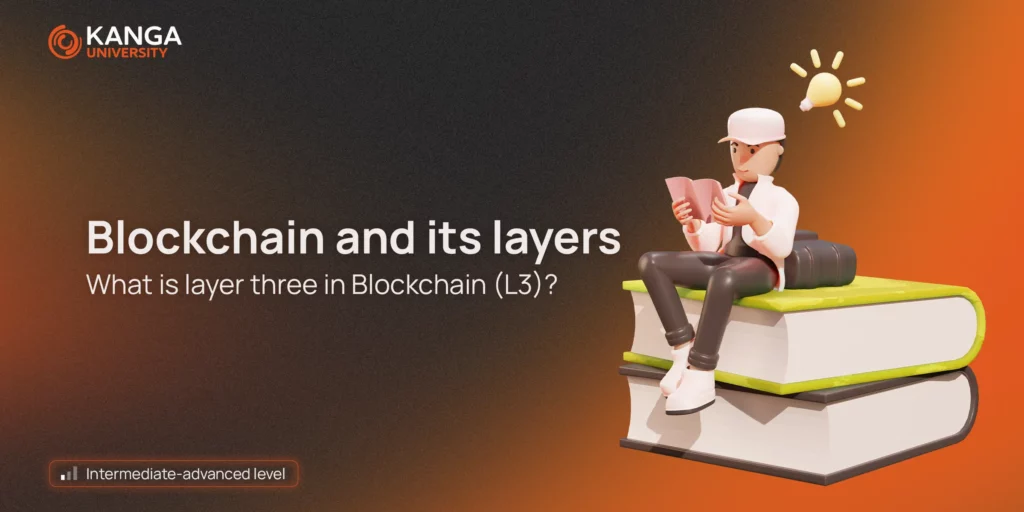
Blockchain, due to the lack of a centralized authority, needs to be even more secure. At the same time – scalable to cope with the growing number of users, data, and transactions. In today’s lesson, we will discuss solutions and determine exactly what is the Layer 3 (L3)in Blockchain, which are supposed to provide greater scalability and maintain the highest level of protocol security.
What is layer three of blockchain technology?
These are basically unique solutions that enhance blockchain networks with cross-chain capabilities. Then blockchain achieves full interoperability. Imagine layer three protocols as a simplification of all layers. Someone, like a messenger between layer 1 and layer 2.
As a rule, Layer 1 and Layer 2 solutions are closely related. So creating interoperability protocols on another layer is a super idea. As a result, Layer 3 solutions were created.
Here it should be emphasized that the entire Tier 3 system does not rely on any custodian or intermediary.
Why does blockchain architecture need a third layer?
1 Blockchain trilemma
The three main elements of blockchain are decentralization, security, and stability. In practice, almost every blockchain-based project must sacrifice one of these elements to achieve better performance.
Let’s look at examples. Ethereum and Bitcoin focus mainly on security and decentralization. Solana – on stability and security.
The scalability trilemma is difficult to solve, relying wholly on layer 1. Therefore, a multilayer structure is better and achieves stability, security, and decentralization.
2. blockchain interoperability
The multi-level structure of blockchain technology solves perfectly the problem of scalability. Recall – blockchain interoperability is cross-chain functionality. This means that two different blockchain networks with the same ecosystems can communicate with each other. With the others – no.
Layer 3 solutions of blockchain technology become a necessity when you think about popular DeFi applications. Aave and Serum run on different networks. As a result – access to services on these platforms are not possible for everyone. As a result, the lack of interoperability between blockchain, is the main reason for the introduction of Layer 3 solutions.
Examples of Layer 3 protocols
Many new projects using Layer 3 have emerged with protocols using interoperability. Here are some examples.
Interledger
Interledger or ILP by Ripple is one of the most popular protocols using Layer 3 solutions that exists on the market.
It features a multi-layered ecosystem with three distinct layers that have separate functions. Layer 1 acts as the blockchain’s highway ledger, while Layer 2 contains the local area network or LAN. Layer 3, on the other hand, provides faster and more profitable transactions on the blockchain Ripple.
IBC
Otherwise, known as the Inter-Blockchain Communication Protocol of Cosmos. The Layer 1 protocol is the well-known Tendermint Core. Cosmos SDK facilitates the functionality of Layer 2. Layer 3, or IBC protocol, helps applications communicate reliably and securely between modules of the blockchain. It transmits data, is responsible for authentication and works across multiple blockchain networks.
Quant
This is a great solution for blockchain networks of different companies. It helps connect public and private chains. It uses Overledger DLT to facilitate interoperability. It’s also a great Layer 3 solution.
Vitalik Buterin and his vision for Tier 3 solutions
The co-founder of Ethereum has his specific vision for Layer 3 solutions. Layer 2, and in fact its solutions based on Ethereum, focus on scaling the network.
Vitalik’s idea is for the layer 3 counterparts to have a different purpose and provide functionality to the protocols. According to him, in the near future, this is what Layer 3, which is being worked on extensively, will be used for.
According to the co-founder of Ethereum, the emergence of a third layer in blockchain technology only makes sense if it provides much more functionality than the available layer 2.
Another suggestion for Layer 3 operations would be to scale down applications that do not want to use the Ethereum Virtual Machine (EVM)in their operations to perform complex calculations.
The Ethereum co-founder’s ideas are great, but nevertheless it is worth rethinking whether Layer 3 protocols will actually be more efficient than the proposed Layer 2 models.
Summary
Blockchain’s Layer 3 can change the way they operate in the market. The goal of Layer 3 is to achieve full interoperability, using uncomplicated and compatible blockchain systems. Layer 3 brings solutions, mass adoption of cryptocurrencies and blockchain.